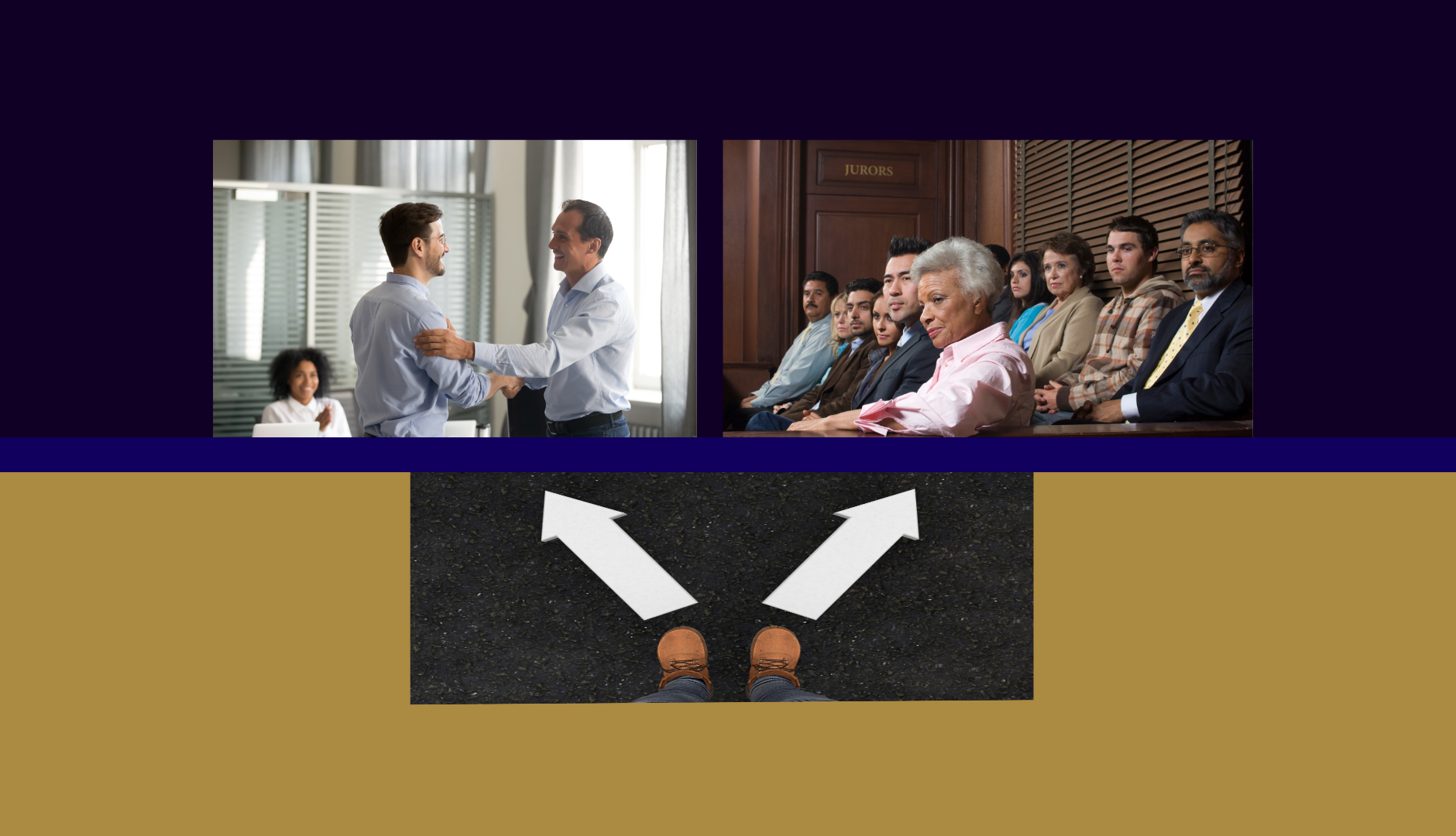5 Reasons Not To Skip The Opening Joint Session
There are two ways to begin a mediation session: with an opening joint session and without one. Over the years, the once-prevailing approach to begin with a joint session seems to have lost its appeal. Often a joint session is viewed as unnecessary because the parties already know each other’s positions, or is considered not to be a good use of time, or there’s a concern meeting jointly could hinder the negotiations.
While all of these may be true in any particular case, most would agree that it is rare for one approach to be right in all circumstances. This article is not intended to debate which approach is better in any particular case. Instead it will simply highlight five ways in which an opening joint session can improve the mediation process. In other words, below are five possible reasons to consider for not skipping it.
Helps the mediator help the parties by establishing her role and authority as an impartial neutral
Every mediator opens a mediation with a few words of encouragement and, perhaps, some housekeeping about what to expect process-wise. While mediators can provide this information to each party separately, there are benefits to talking with all of parties at the same time.
When everyone hears the same information in the same tone of voice in the same order at the same time, everyone sees the mediator interacting with everyone else neutrally. By openly talking with all of the parties and their lawyers together, the parties are able to see the mediator as someone they can trust as a neutral collaborator. And for the mediator, it’s her chance to deliver the impression that this negotiation is not going to be like any other and, thus, establish her role in guiding the process.
In a world where first impressions matter, the mediator’s opening interactions with the parties set the stage for what follows. A joint session is an opportunity for the selected mediator to reassure all of the parties that their time in mediation is being well-spent, whether or not an agreement is reached.
Reveals who the decision-makers are “in the other room”
One of the most important factors in mediating a dispute is knowing that the right decision-makers are available and engaged in the process. Dwight Golann, in his book “Sharing A Mediator’s Power: Effective Advocacy in Settlement,” suggests that “[h]aving capable decisions makers is probably even more important than obtaining the best possible neutral.” In those instances in which a person important to the success of the negotiation is not likely to participate, Golann recommends asking the mediator to secure her participation.
During the joint session all of the decision-makers and their counsel actually see each other before the negotiation begins. A lot can be learned about someone simply by being in their presence. Indeed, one of the first rules of persuasion is to “know your audience,” and one way to do that is to meet with it.

Affords an opportunity to directly persuade through storytelling
“If you need to make an argument about an issue about which you feel very strongly, don’t use rhetoric. Tell a story instead,” says John Baldoni, in a 2011 Harvard Business Review article Using Stories to Persuade.
As lawyers, we are trained to use logos (argument by logic) to persuade dispassionate audiences, like judges. But, in mediation, there are no judges and the audience may not be dispassionate. The goal in mediation is not to win over your opponent, it is to win-over your opponent. After months (sometimes years) of competitive legal jousting, for at least one day, the parties confidentially discuss what common ground, if any, there may be to end their fight. With this goal in mind, logos alone may not be the most effective means of persuasion.
In his book Thank You For Arguing, Jay Heinrichs explains how logos and pathos (argument by emotion) combined help to win-over an audience with greater ease. Together, logos and pathos appeal to both the brain and the heart of a person, respectively. Heinrich explains that “[w]hile our brain tries to sort the facts … our heart makes us want to do something about” them.
In mediation, the joint session presents an opportunity for disputants to use storytelling – logos and pathos – to start the negotiation. Because stories are persuasive tools, the idea is not to reduce the level of advocacy Instead, a well-told story expresses a less combative approach to the day’s agenda while conveying a contrasting point of view. It’s an opportunity to convey – directly and persuasively – to an attentive audience (the decision-makers and the mediator) a very valuable message” either: ‘This is not going to be a cake-walk for anybody‘” or positional weaknesses that reveal “just how outgunned” a party is.
Having worked closely with their own counsel in preparing for mediation, the decision-makers come to mediation knowing their theory of the case, familiar with the other side’s theory, and armed with their counsel’s opinions as to the strengths and weaknesses of the competing positions. But they may not have heard the other side’s story told the way the other side’s lawyer will tell it. In other words, they may not have heard the story in the same way they will hear it when spoken from a new voice, and perhaps told more – or even – less persuasively.
If there is a concern that the other side might use a joint session to grandstand, instead of persuade, it is helpful to prepare the parties ahead of the mediation session. Talk with them about how to interpret such behavior and remind them that they can control only their side of the negotiation. Coach them on the importance of not reacting openly or being offended. Instead, prepare them to listen closely and accept the presentation as simply another piece of information. The more information the parties have about who is “in the other room” during a mediation, the better able they are to assess responses, options, and offers in the subsequent negotiations.
Reassures the parties by serving as a substitute for “their day in court”
“Mediation is not a court, but the process can give parties a better experience of being heard than a trial,” according to Golann.
Even though mediations are less formal than trial, a joint session makes the process feel a little more formal. It allows the parties to see and hear their lawyers advocate for them, and the other side’s lawyer represent the opposing view, in front of a neutral third-party – the mediator. Although a mediator makes no decisions, by experiencing this kind of advocacy parties are assured that they are being well-represented by counsel and heard by an impartial stranger. With that assurance, the parties are in a position to spend the day discussing ways to control the future, even if it is still hard to put the past in the rearview mirror.
Opens direct lines of communication between the parties
Once a conflict escalates to a point where litigation looms, communication between the parties often starts to deteriorate or even evaporate. As part of a sound litigation strategy, months (even years) can pass during which a party has relied solely on counsel to speak for them, creating distance between the underlying stakeholders in the dispute.
The confidentiality of mediation presents a unique opportunity for parties to share directly with each other. For individuals, it is an opportunity to talk about how the conflict has affected his/her life, business, and relationships. For businesses, it may be an opportunity to signal that there are more ways than one to resolve the conflict and the benefits to keeping an open-mind about the negotiation ahead.
In those cases in which a party wishes to speak, it can be impactful. In certain cases, it can be the reason why a settlement is reached.”
Felicia Harris Hoss
is an attorney-mediator, arbitrator, and early dispute resolution (EDR) neutral, with more than 20 years of legal experience. Through the years, Felicia has helped parties resolve disputes both inside and outside of the courtroom in a wide range of industries involving a broad spectrum of claims. Felicia is available to assist parties and their counsel through online, hybrid, and in-person mediations, arbitrations, and EDR processes.









